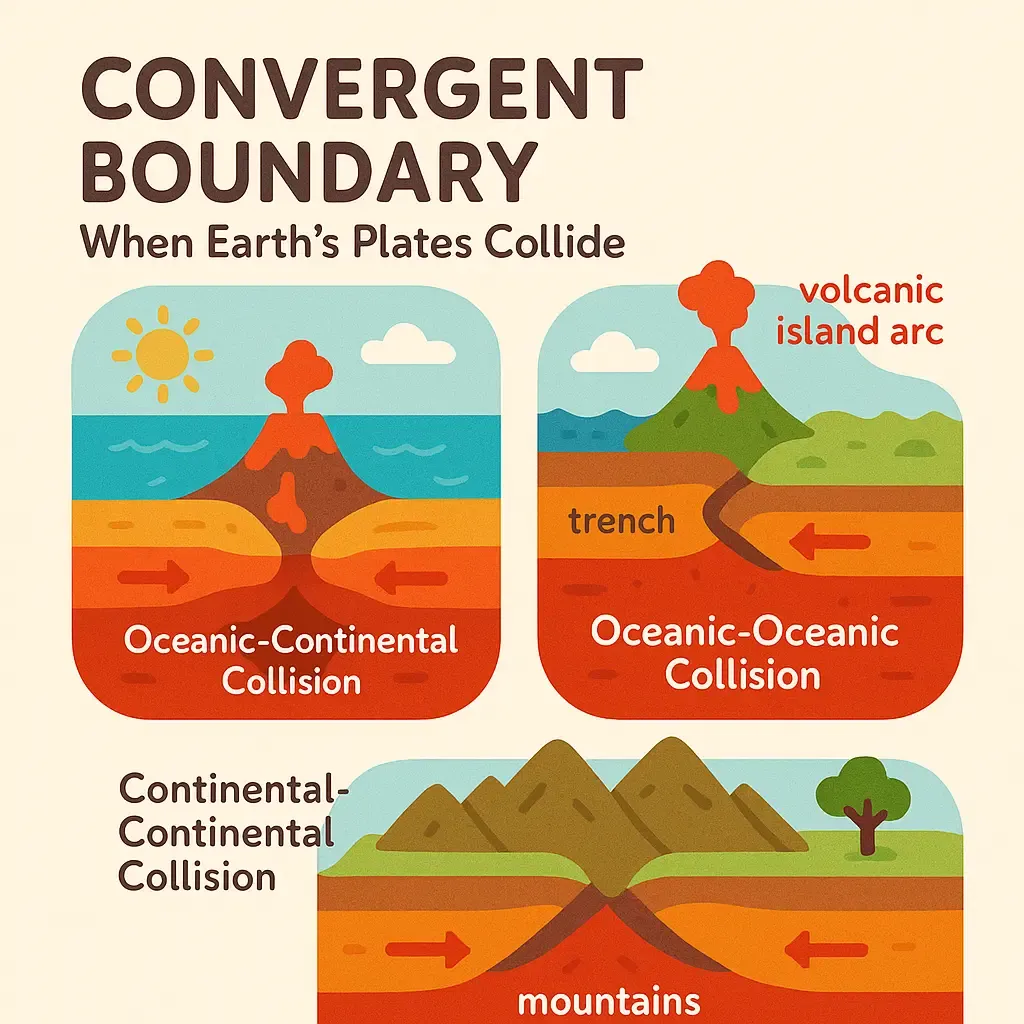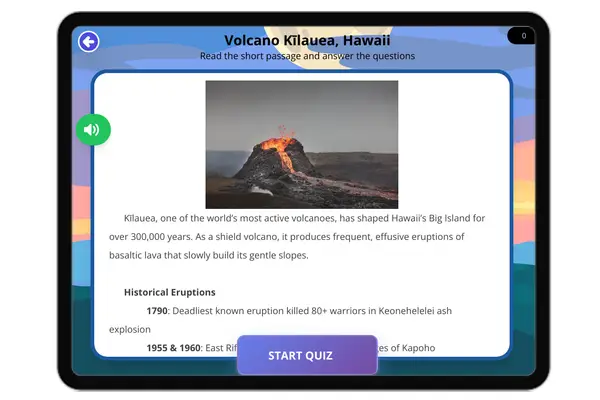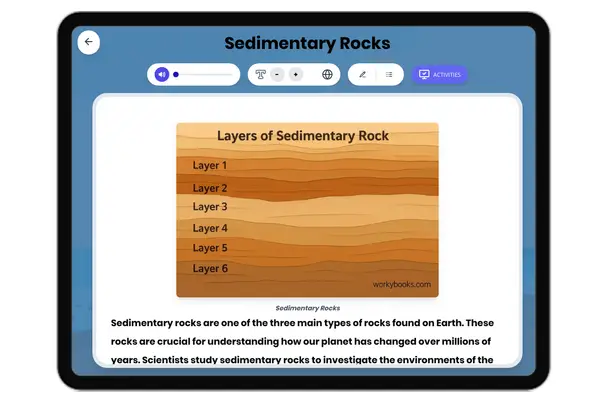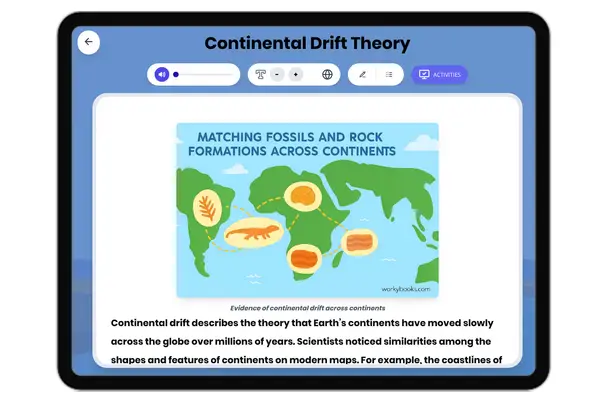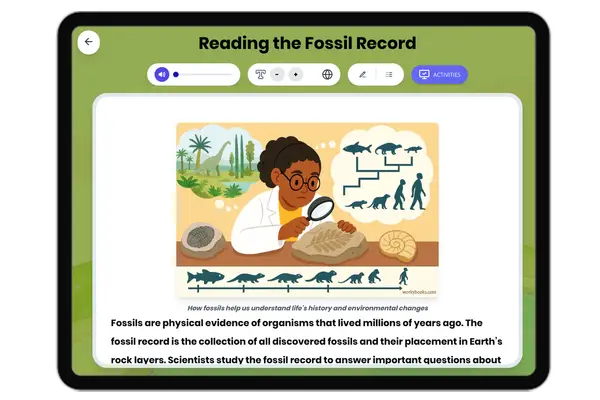Convergent Boundary: When Earth's Plates Collide — Reading Comprehension
Premium Resource
Grades
- 5
- 6
- 7
- 8
Standards
- MS-ESS2-3
- RI.6.1
- RI.7.4
- RI.8.2
PRINT+DIGITAL RESOURCE
This learning resource is available in interactive and printable formats. The interactive worksheet can be played online and assigned to students. The Printable PDF version can be downloaded and printed for completion by hand.
About This Reader
This science passage describes three types of convergent plate boundaries (oceanic-continental, oceanic-oceanic, continental-continental) and their geological effects. It highlights real-world examples like the Andes Mountains (subduction), Mariana Trench (deepest ocean trench), and Himalayas (continental collision). The text explains key concepts including subduction, metamorphic rock formation, and fossil evidence of past oceans (marine fossils on Everest). Aligned with NGSS MS-ESS2-3, it demonstrates how rock layers and fossils serve as evidence for plate tectonics. The passage supports Common Core reading standards for analyzing cause-effect relationships in scientific texts about Earth's systems.
Perfect For:
👩🏫 Teachers
- • Reading comprehension practice
- • Auto-graded assessments
- • Literacy skill development
👨👩👧👦 Parents
- • Reading practice at home
- • Comprehension improvement
- • Educational reading time
🏠 Homeschoolers
- • Reading curriculum support
- • Independent reading practice
- • Progress monitoring
Reading Features:
📖
Reading Passage
Engaging fiction or nonfiction text
❓
Comprehension Quiz
Auto-graded questions
📊
Instant Feedback
Immediate results and scoring
📄
Printable Version
Download for offline reading
🔊
Read Aloud
Voice-over with word highlighting



